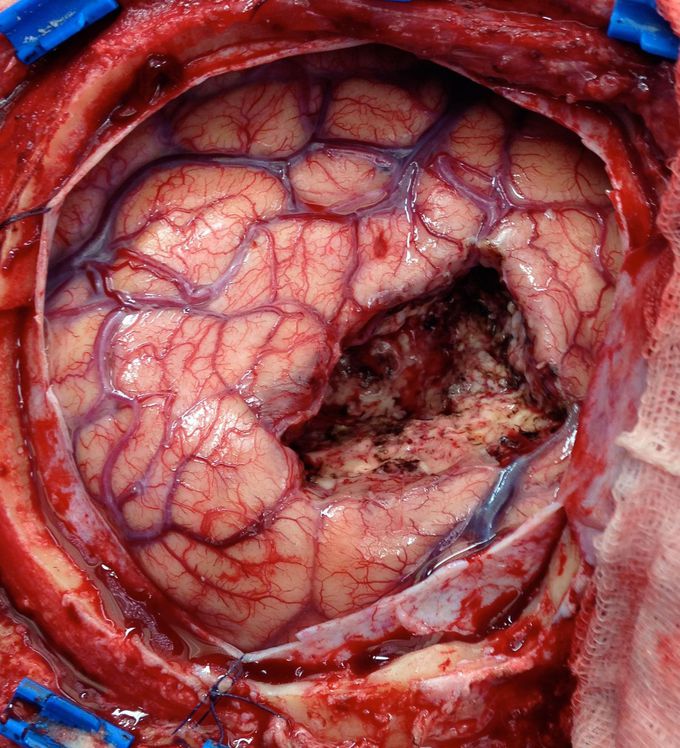


CEREBRAL AVM (AVM-Arteriovenous malformation Arteriovenous malformation)
Surgical treatment | Cerebral AVM The most effective treatment for an AVM is first an embolization under general anesthesia (see endovascular AVM) involving mainly the large feeding arteries which are glued. If the place of the AVM in the brain permits it to be removed (non-eloquent brain area) then the AVM must be surgically removed. This has the advantage that the AVM including the very small branches that are not embolised may be gone forever with no chance of a relapse (re-grow from the AVM). This surgical removal of the AVM also prevents growth or regrowth of AVMs previously embolised or treated with radiotherapy alone. Embolization alone of a brain AVM is in most cases not possible. The AVM operation is done under general anesthesia. A bone flap is made. The AVM lies usually superficial and it is, gently, little by little removed completely under the microscope until all small vessels are shrunken and removed from the brains. The surgical risk depends on the size and location of the AVM, but is in most cases, low (5% complications).

